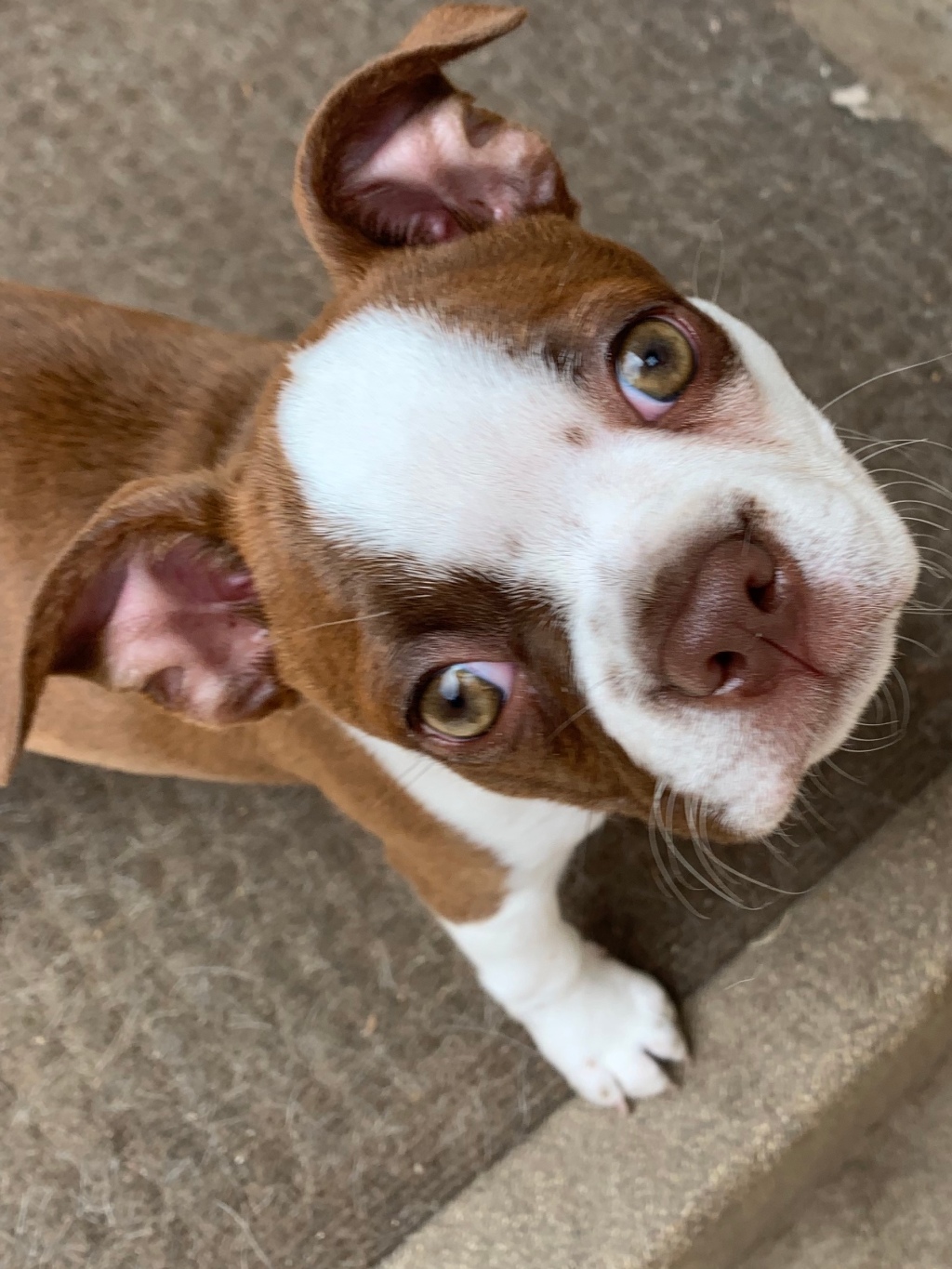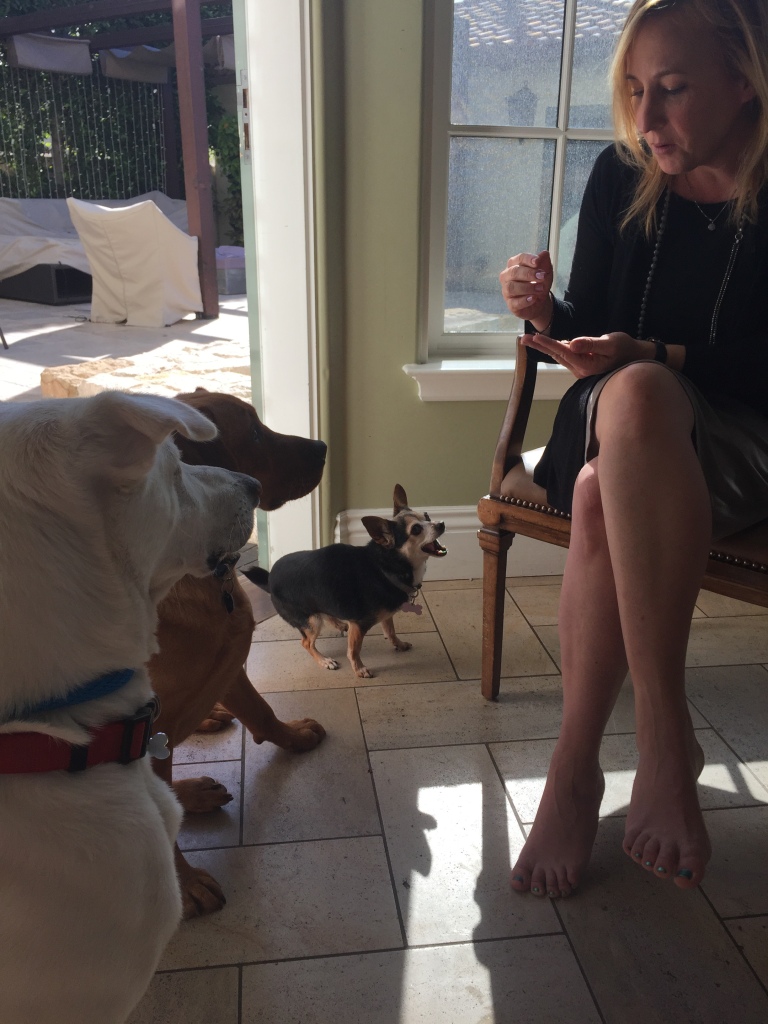
Dogs are primarily physical communicators (body language). Humans are primarily verbal.
When our dogs fail to respond as desired to a spoken cue/command, humans tend to repeat the word as though our dogs didn’t hear us.
Dogs have far more sensitive hearing than humans. When a dog doesn’t respond as desired to a spoken cue/command, it’s more likely that they didn’t understand us, rather than a problem with them hearing us.

When we repeat cues/commands a dog doesn’t yet know well, we actually make it harder for them to understand what we’re asking them to do.
When we repeat a command multiple times, we aren’t teaching or training, we’re delaying dog learning.
Dogs learn by watching what we do, not the words we say. We teach them to associate words/cues/commands we say with our behaviors and our response to their behaviors. It’s easier for dogs to learn when we show them what we want without using words, first.
I use hand signals/sign language to teach puppies and dogs most commands. I rarely speak to them during the teaching process. I reward their behaviors with high-value treats.
Once a dog demonstrates that they understand a hand signal by offering the correct behavior repeatedly, I add the verbal cue/command/word at the same time I use the hand signal.

I’m typically able to teach puppies and dogs a command or more per session with this method. When I previously used spoken cues/commands to teach new behaviors, it took me 3-4 times longer.
Try talking less to your puppy or dog during teaching sessions and focus on showing them what you want. You might be pleasantly surprised with the results.
Dee Green has been a professional dog trainer and canine behavior consultant for more than 20 years. She specializes in puppies up to 18 months, and fearful, anxious and reactive dogs of all ages.
©️Dee Green, 2023
